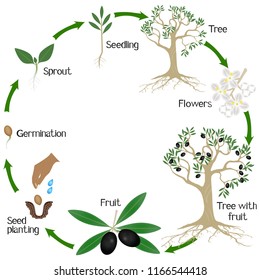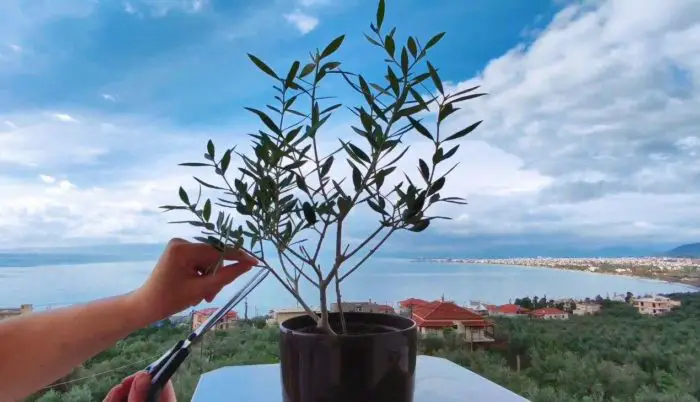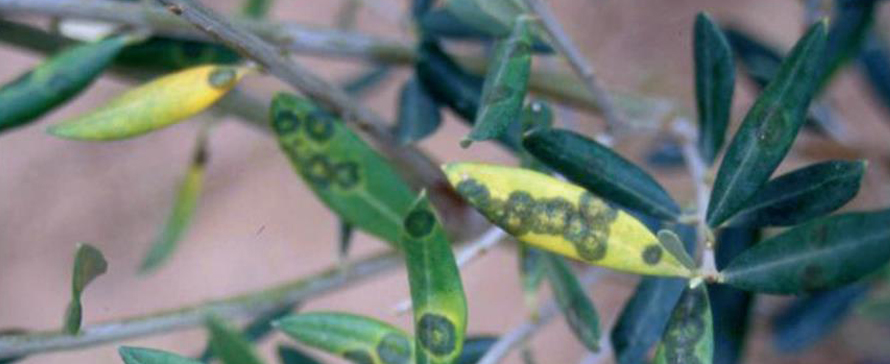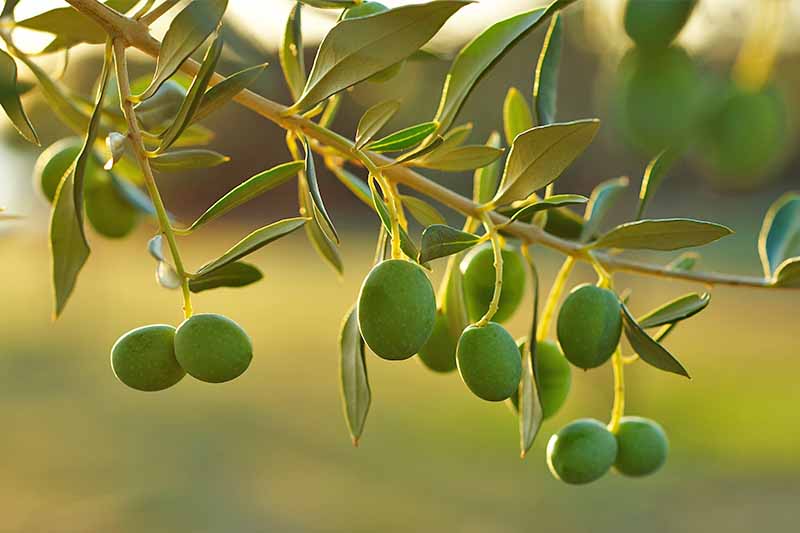Unlocking the Secrets of Olive Tree Development
Understanding how olive trees grow is crucial for anyone looking to cultivate their own olive tree, whether for personal enjoyment or commercial purposes. By grasping the fundamental principles of olive tree growth, you’ll be better equipped to provide the necessary care and attention to help your tree flourish. Olive trees have been a cornerstone of Mediterranean culture for thousands of years, providing a rich source of food, oil, and beauty. However, their growth and development are influenced by a combination of factors, including soil quality, sunlight, water, and pruning.
The process of growing an olive tree requires careful consideration of these factors, as well as a commitment to regular maintenance and care. By mastering the art of olive tree cultivation, you’ll be able to create an environment that fosters healthy growth and maximizes fruit production. In this comprehensive guide, we’ll delve into the world of olive tree growth, exploring the essential factors that contribute to a healthy and thriving tree.
So, how do olive trees grow? The answer lies in a combination of factors, including the quality of the soil, the amount of sunlight and water the tree receives, and the pruning and training techniques used to shape the tree. By understanding these factors and how they impact olive tree growth, you’ll be able to provide your tree with the best possible start in life and help it reach its full potential.
From Seed to Sapling: The Early Stages of Olive Tree Growth
Planting an olive tree is an exciting venture, but it requires careful consideration of the tree’s early stages of growth. Understanding how to plant and care for an olive tree seedling or sapling is crucial for establishing a strong foundation for future growth. When planting an olive tree, it’s essential to choose a location with well-draining soil and full sun. Olive trees prefer a slightly acidic to neutral soil pH, ranging from 6.0 to 8.0.
When planting from seed, sow the seeds about 1/4 inch deep in a seed starting mix, and keep the soil consistently moist. Transplant the seedlings into individual pots or directly into the ground when they reach 6-8 inches tall. If planting a sapling, dig a hole that is twice as wide and just as deep as the root ball. Gently remove the sapling from its container, taking care not to disturb the roots. Place the sapling in the hole, and backfill with soil, tamping it down gently as you go.
During the early stages of growth, olive trees require regular watering, especially during the first year after planting. Water the tree deeply once or twice a week, depending on weather conditions. It’s also essential to provide adequate sunlight, as olive trees require at least 6 hours of direct sunlight per day. By providing the right conditions and care, you’ll be able to help your olive tree grow and thrive, setting it up for success in the years to come.
Nourishing Your Olive Tree: Soil, Sunlight, and Water Requirements
Providing the right nutrients and conditions is crucial for healthy olive tree growth. Olive trees require a well-balanced diet of essential nutrients, including nitrogen, phosphorus, potassium, and micronutrients like iron and zinc. The ideal soil pH for olive trees is between 6.0 and 8.0, with a slightly acidic to neutral soil pH being optimal.
In terms of sunlight, olive trees require at least 6 hours of direct sunlight per day. However, in warmer climates, it’s essential to provide some shade, especially during the hottest part of the day. This can be achieved by planting the tree in a location that receives morning sun and afternoon shade.
Watering is also critical for olive tree growth. Olive trees require consistent moisture, especially during the first year after planting. However, overwatering can be detrimental, so it’s essential to monitor the soil moisture levels and adjust watering accordingly. A general rule of thumb is to water the tree deeply once or twice a week, depending on weather conditions.
Fertilization is also essential for promoting healthy olive tree growth. A balanced fertilizer with a ratio of 10-10-10 (nitrogen-phosphorus-potassium) is suitable for olive trees. However, it’s essential to follow the manufacturer’s instructions and avoid overfertilizing, as this can damage the tree. By providing the right nutrients and conditions, you’ll be able to promote healthy olive tree growth and maximize fruit production.
Pruning and Training: Shaping Your Olive Tree for Optimal Growth
Pruning and training are essential techniques for shaping your olive tree and promoting optimal growth. Pruning involves removing select branches or stems to control the tree’s size, promote fruiting, and remove diseased or damaged branches. Training, on the other hand, involves guiding the tree’s growth to achieve a desired shape or structure.
When pruning an olive tree, it’s essential to make clean cuts just above a growth node, using a sharp and sterile pruning tool. This will help prevent the spread of disease and encourage healthy growth. Remove any dead, diseased, or damaged branches, as well as any branches that are rubbing against each other or growing inwards.
Training an olive tree involves providing support for the tree’s growth, such as staking or trellising. This can help control the tree’s size and promote a more upright growth habit. You can also use pruning to promote a central leader or open center system, which can help improve air circulation and reduce disease.
Regular pruning and training can help promote healthy growth, increase fruit production, and improve the overall appearance of your olive tree. By understanding how to prune and train your olive tree, you can help it reach its full potential and enjoy a bountiful harvest of delicious olives.
Pest and Disease Management: Protecting Your Olive Tree from Harm
Olive trees can be susceptible to various pests and diseases, which can impact their growth and productivity. Regular monitoring and maintenance are essential to prevent and manage these issues. Some common pests that can affect olive trees include olive fruit flies, olive knot, and root weevils.
Diseases such as olive leaf spot, olive canker, and root rot can also affect olive trees. To prevent these issues, it’s essential to maintain good hygiene practices, such as removing any infected or damaged branches, and disinfecting pruning tools.
Regularly inspecting your olive tree for signs of pests or diseases can help identify issues early on, allowing for prompt treatment and prevention of further damage. Some common signs of pests or diseases include yellowing or dropping leaves, black spots or lesions on the leaves or branches, and soft or mushy fruit.
Treatment methods for pests and diseases can vary depending on the specific issue, but may include the use of insecticides, fungicides, or bactericides. It’s essential to follow the instructions on the product label and take necessary precautions to avoid harming the tree or the environment.
Prevention is key to managing pests and diseases in olive trees. By maintaining good hygiene practices, regularly inspecting the tree, and taking prompt action when issues arise, you can help protect your olive tree from harm and ensure a healthy and productive harvest.
How to Promote Fruit Production and Harvest Your Olives
Promoting fruit production in olive trees requires a combination of proper care, pruning, and fertilization. One of the most effective ways to promote fruiting is to provide the tree with adequate nutrients, particularly nitrogen, phosphorus, and potassium. A balanced fertilizer with a ratio of 10-10-10 (nitrogen-phosphorus-potassium) is suitable for olive trees.
Pruning is also essential for promoting fruit production. Prune the tree annually to remove any dead, diseased, or damaged branches, and to shape the tree to allow for good air circulation and sunlight penetration. This will help promote healthy growth and fruiting.
Another way to promote fruit production is to provide the tree with adequate water. Olive trees require consistent moisture, especially during the fruiting stage. However, overwatering can be detrimental, so it’s essential to monitor the soil moisture levels and adjust watering accordingly.
Harvesting olives is a critical step in the process of growing olive trees. The best time to harvest olives depends on the variety, but generally, it’s between October and December. There are several methods for harvesting olives, including hand-picking, mechanical rakes, and tree shakers. The method used will depend on the size of the tree and the quantity of olives being harvested.
When harvesting olives, it’s essential to handle the fruit gently to avoid bruising or damaging the olives. Olives can be harvested at different stages of ripeness, depending on the desired use. Green olives are typically harvested when they are immature and unripe, while black olives are harvested when they are fully ripe.
Common Challenges and Solutions: Troubleshooting Olive Tree Growth
Despite proper care and cultivation, olive trees can still face challenges that impact their growth and productivity. Some common issues that can affect olive tree growth include nutrient deficiencies, pests, and diseases.
Nutrient deficiencies can be caused by a lack of essential nutrients in the soil, such as nitrogen, phosphorus, or potassium. To address this issue, it’s essential to conduct regular soil tests to determine the nutrient levels in the soil. Based on the test results, you can adjust your fertilization schedule to provide the necessary nutrients for healthy growth.
Pests and diseases can also impact olive tree growth. Regular monitoring and maintenance are essential to prevent and manage these issues. Some common pests that can affect olive trees include olive fruit flies, olive knot, and root weevils. Diseases such as olive leaf spot, olive canker, and root rot can also affect olive trees.
To address pest and disease issues, it’s essential to identify the problem early on and take prompt action. This may involve using insecticides or fungicides, pruning infected branches, or adjusting your irrigation and fertilization schedule.
Other common challenges that can affect olive tree growth include drought, extreme temperatures, and poor soil quality. To address these issues, it’s essential to provide the tree with adequate water, protect it from extreme temperatures, and improve the soil quality through the use of organic matter and fertilizers.
By being aware of these common challenges and taking prompt action to address them, you can help ensure the health and productivity of your olive tree.
Conclusion: Enjoying the Fruits of Your Labor
Cultivating a healthy and thriving olive tree requires dedication, patience, and a willingness to learn. By following the guidelines outlined in this article, you’ll be well on your way to growing a productive and fruitful olive tree. Remember to provide your tree with the right conditions, including adequate sunlight, water, and nutrients, and to prune and train it regularly to promote optimal growth.
Regular monitoring and maintenance are also crucial to preventing and managing pests and diseases. By being aware of the common challenges that can affect olive tree growth, you’ll be able to identify and address issues early on, ensuring the health and productivity of your tree.
As you enjoy the fruits of your labor, remember to continue learning and improving your olive tree growing skills. With time and practice, you’ll become an expert in cultivating healthy and thriving olive trees, and you’ll be able to enjoy the many benefits that come with growing your own olives.
Whether you’re a seasoned gardener or just starting out, growing an olive tree can be a rewarding and enjoyable experience. By following the tips and guidelines outlined in this article, you’ll be able to grow a healthy and productive olive tree that will provide you with delicious olives for years to come.


:max_bytes(150000):strip_icc()/GettyImages-1286402426-9c5359b11c984c78a863039e99e1984a.jpg)




:max_bytes(150000):strip_icc()/Spread-GettyImages-580750005-5af4b577119fa80037389cdf.jpg)